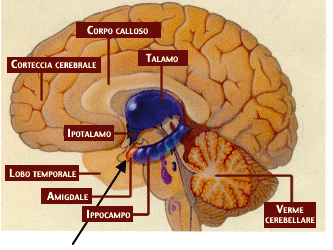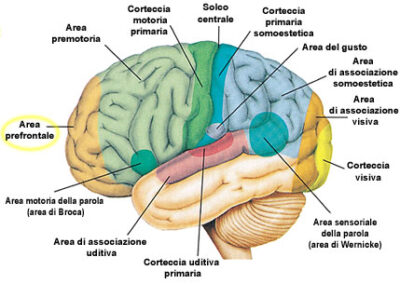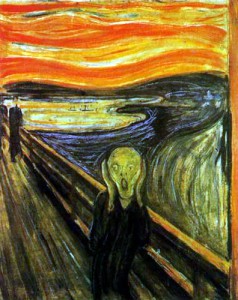November 17, 2024 Internet and virtual life, Medicine of the Soul
There are depths that most people dare not enter.
They are the underworlds of our instinctive lives, the journey into our nightmares necessary to be reborn.
The subconscious and the conscious. The abysses where no one dares to go
One must always work hard on oneself.
It is an internal examination of the interaction between our ego and our subconscious.
A task that is never easy to accomplish.
It took me a long time to fully understand the meaning and especially the value of these profound words.
And suddenly my life is coloured like a rainbow.

When you study yourself, sometimes you discover things that you could not understand and that make you take a step forward.
Sometimes, however, you realize that they are not correct, so a small act of humility must be performed.
In short, admit that you were wrong.
The subconscious mind is our emotion generator-accumulator.
Whereas the subconscious is our inner child.
Children play with what is available to them.
With bricks they may build a house or a bridge or at least something that allows them to use those bricks.
Our inner child plays with emotions, enjoys processing them over and over again, shaping them and moving them around at will.
Moreover, it is able to make us perform actions that are in tune with the emotions or that create a resonance in our lives with the emotions it has chosen to use for its favorite game at that moment.
Sometimes he uses them to communicate something to us, sometimes for pure enjoyment.
Other times he creates incredible mental chaos.
And this happens when he wants our attention.
Just like a child playing in a room where two “adults” are having a “serious” conversation and ignoring him while he plays.
What would the child do if no one listened to him ?
He would raise the volume of his voice to attract attention.
Our unconscious acts just like children who want to attract our attention, playing with all the emotions it finds in the body it is trapped in and from which the mind is careful not to let it out.
We might think that it amuses itself by multiplying the wrong emotions, running them around in the head more often, and thus causing the subconscious to increase the receptors that produce them.
But he also creates something in daily life that puts him in tune with the emotion he wants you to hear.
He knows exactly what he is doing.
He may be a child, but he is very alert and active, a magician.
The only power it does not have is to break the free will of the mind that “controls” it.
In fact, it is our free will that decides whether we listen to our subconscious or continue with its beliefs and all the masks we identify with on a daily basis.
It is up to us to understand what our subconscious is telling us, which in a nutshell is what shapes our lives.

The more we insist on not listening to it, the more it will cause us to experience the emotion that is sabotaging us, and the more it will push the subconscious to become a battery of uncontrolled and especially uncontrollable emotions, increasingly charged with those cellular receptors that produce and harmonize with the emotion we are trying not to understand.
The subconscious is our friend, the only real friend we have.
It makes us understand why we do things, and having a conversation with it is undoubtedly the most interesting discovery we can make.
The problem we all face in seeking initial contact with the unconscious is that we tend to satisfy the needs of our ego : we want to meet it in order to increase the things we want in life, ignoring the fact that if we do not have them yet, it is most likely our unconscious that did not want them.
If we seek contact and conversation only to satisfy our mind, it will resist, forcing us to abandon the book on the unconscious and make bad decisions all the time.
Understanding the unconscious is a crucial step, not to force life, but to finally make it flow and be enjoyable, like a child who is able to have fun with whatever is available.
In a war zone, a child knows how to play even with the rubble of destroyed houses.
This simplicity of spirit should make us reflect on the lightness of spirit that characterizes children and that our unconscious demands of us.
This does not mean being irresponsible, but simply being simple, an attitude that is indispensable for seeing life more constructively and free from the mental cages that imprison it.
Observing this new perspective as if we were children can help us understand the small/big rebellious genius in each of us and restore our lost harmony.
By removing the dust from our minds and caressing our subconscious bodies, we can bring back the genius within.
And once again, love is the engine of everything.
Becoming a child again means returning to our subconscious and giving it the proper weight in our daily lives.
If we learn to love and listen to our inner child, we will get everything we need.
Above all, magic.

Information enters the mind through the five senses and then flows into the subconscious.
The subconscious (also called instinct or primal brain) is located in the subcortical regions of the brain, such as the hypothalamus and the amygdala.
Instinct has very fast reaction times.
For example, when you touch something hot, your subconscious mind immediately kicks in and reacts by moving your hand away from the fire long before your conscious mind is aware of it.
In fact, the subconscious mind controls virtually all of our actions.
For example, it manages the movement of the mouth muscles, the functioning of the vocal cords, and facial expressions.
Or it allows us to maintain our balance when we ride a bicycle.
These are activities that occur independently of the conscious mind.
The subconscious mind stores all the information and saves it as an experience.
An experience, of course, can include certain feelings or images.
Or based on other previous experiences.
The conscious mind then receives all the information from the subconscious mind.
It then processes it, applies its inherent logic, and evaluates the experience.
Finally, it metabolizes the situation.
In practice, the conscious mind helps the subconscious mind find the best solutions to various situations that arise.
In addition, when instinct and the conscious mind communicate with each other, one can “reprogram” the subconscious mind itself.
As a result, when a similar situation arises again, the subconscious mind will remember the experience it had before.
React accordingly.
A friend gives you a bunch of flowers.
But immediately a bee stings your nose.
Our subconscious mind will obviously feel the pain.
At the same time, the conscious mind begins to think about how to react the next time a similar experience occurs.
For example, the conscious mind may tell the subconscious mind never to go near a flower again.
Or not to approach a person holding a bouquet of flowers.
How would the conscious mind behave in this case ?
The nose begins to itch as soon as the scent of a bouquet of flowers is smelled.
A real protective warning.
Of course, the conscious mind can help the subconscious mind modify the reaction.
Provided it has enough experience.
In this case, flowers without bees.
As soon as you smell a bouquet of flowers, just look at it carefully.
Make sure there are no bees.
Then you will smell them.
Usually the subconscious mind and the conscious mind work together spontaneously.
The former sends protective warnings to the conscious mind.
And the latter processes the received message correctly.
Repeated drama occurs when protective warnings fail

Modern society teaches us to suppress our feelings.
We learn to hide them.
We replace them with others.
We tend to disguise them.
Most importantly, we desensitize ourselves to them.
We try to separate the feelings we want to feel from our inner logic.
Society often tells us “not to feel a certain emotion.
Men do not need to show their emotions
Women must not get angry
Children in school must be composed and sit at their desks without judging the school system
However, repressing emotions interrupts the vital link through which the subconscious communicates its experiences to the conscious mind.
When this happens, our subconscious tends to repeat the experience more and more intensely.
It tries in every way to inform the conscious mind.
For example, the conscious mind may learn from a parent (or other authority figure) that a certain feeling is “bad” and that “one should not feel that way.
As a result, the conscious mind will tend to perceive that emotion as dangerous.
Attempts to block it at all costs.
The conscious mind may go so far as to program the subconscious mind as a “judge.
With the obvious desire to try to prevent the subconscious from communicating this feeling.
After all, this feeling will always be associated with something negative.
Therefore, it will be avoided at all costs.
However, the subconscious mind will continue to desire to communicate the experience it wants to have, and especially the emotion that accompanies it.
The intensity and desire will increase more and more.
A real pressure that becomes stronger and stronger.
At first, the experience will only be imagined.
Later, real nightmares will begin.

A real inner drama where the subconscious mind wants to feel the same emotion over and over again.
The very one that the conscious mind refuses to feel.
Thus returning to the starting point.
A process that becomes stronger and stronger in the subconscious.
If the conscious mind continues not to receive positive messages from the subconscious mind, these recurring inner dramas will become more and more frequent.
More and more intense each time.
A process that can continue uninterrupted for years.
Sometimes even a lifetime.
The subconscious mind will continue to want the conscious mind to heed the protective warning in every way possible.
But the conscious mind ignores the feelings that the subconscious mind wants.
By suppressing the feelings, the conscious mind blocks its own better alarm system that would allow it to recognize them as negative again.
In fact, the subconscious mind always has positive intentions.
That is why everyone always gets what they want.
Or rather, they get what their subconscious desires.
The protests and denials of the conscious mind only confirm this.
Instinct. The unconscious way similar people communicate with each other
We all have a subconscious.
And it is the subconscious that is the primary communication network between like-minded people.
This is because it instinctively recognizes whether another person’s subconscious can become a good ally.
This is especially true when it wants to create a drama to convey a “certain” emotion to the conscious mind.
When two “brothers” recognize each other, they are immediately drawn to each other by a kind of “chemical” attraction.
This explains, for example, why people who have been abused in childhood feel a strong visceral attraction to violent and aggressive individuals.
This unconscious desire to have such a person as a life partner goes so far as to make them unconsciously desire to become like him.
There is also a collective consciousness that stores and unites the subconscious.
Dictionaries and libraries, for example.
But especially the Internet.
This can easily transmit certain emotional messages.
The global consciousness can either receive them or reject them.
In the latter case, “global” inner dramas can be created.














